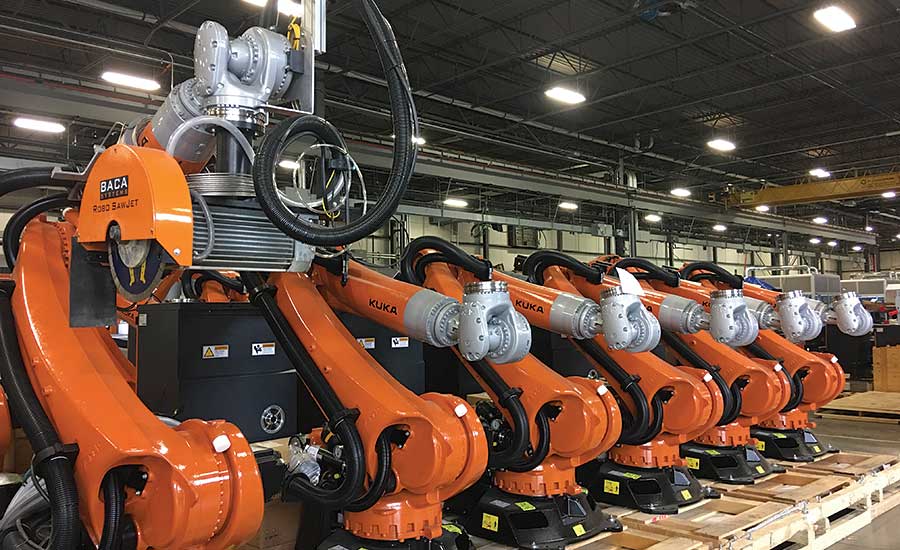In the realm of construction and architecture, the precision and efficiency of stone cutting machinery play a pivotal role in shaping monumental structures and intricate designs. From ancient civilizations carving marvels like the pyramids to modern skyscrapers and sculptures, the evolution of stone cutting technology has been profound. As we look towards the future, advancements in this field are poised to revolutionize the industry, offering enhanced capabilities and addressing sustainability concerns. Let’s delve into the future of stone cutting machinery, exploring emerging trends and innovations that are reshaping the landscape.
Precision and Automation: One of the most significant trends driving the future of stone cutting machinery is the emphasis on precision and automation. Manufacturers are integrating advanced robotic systems and computer-controlled processes to achieve unparalleled accuracy in cutting and shaping stones. These systems utilize sophisticated algorithms and sensors to analyze the composition of the stone and execute precise cuts with minimal human intervention. By automating repetitive tasks and minimizing errors, manufacturers can enhance productivity and streamline production processes.

Digitalization and CAD/CAM Integration: The integration of Computer-Aided Design (CAD) and Computer-Aided Manufacturing (CAM) technologies is becoming increasingly prevalent in stone cutting machinery. CAD software enables designers to create intricate 3D models of stone structures, allowing for precise visualization and customization. CAM software then translates these designs into machine-readable instructions, guiding the cutting process with pinpoint accuracy. This digital integration not only facilitates seamless communication between design and manufacturing stages but also enables rapid prototyping and iteration, accelerating the development cycle.
Multi-axis Cutting Systems: Traditional stone cutting machinery often operates in a linear fashion, limiting the complexity of shapes and contours that can be achieved. However, the advent of multi-axis cutting systems is expanding the horizons of stone fabrication. These systems incorporate multiple cutting heads that can move independently along different axes, enabling the creation of intricate geometries and curved surfaces with ease. Whether it’s carving ornate sculptures or fabricating complex architectural elements, multi-axis cutting systems offer unprecedented flexibility and creative freedom to designers and craftsmen.
Laser and Waterjet Cutting Technologies: Laser and waterjet cutting technologies are revolutionizing the way stones are cut and shaped. Laser cutting harnesses the power of concentrated light beams to precisely carve through stone surfaces, offering unparalleled speed and accuracy. Waterjet cutting, on the other hand, utilizes high-pressure streams of water mixed with abrasive materials to erode the stone, enabling the cutting of intricate patterns and delicate details without causing thermal damage. These advanced cutting techniques are ideal for working with a wide range of stone materials, including marble, granite, and limestone, and are highly sought after for their precision and versatility.
Sustainability and Environmental Concerns: In an era increasingly focused on sustainability, the stone cutting industry is facing scrutiny regarding its environmental impact. Manufacturers are therefore exploring eco-friendly alternatives and implementing measures to minimize waste and energy consumption. Advanced recycling systems are being integrated into stone cutting machinery to reclaim and reuse water and abrasive materials, reducing resource depletion and pollution. Furthermore, the adoption of renewable energy sources, such as solar and wind power, is helping to mitigate the carbon footprint of stone fabrication processes, making them more environmentally sustainable in the long run.

Customization and Personalization: As consumer preferences continue to diversify, there is a growing demand for customized and personalized stone products. Stone cutting machinery is evolving to cater to this trend, offering greater flexibility in design and production. Whether it’s bespoke countertops, engraved monuments, or intricate mosaics, manufacturers are leveraging advanced software and machinery to fulfill unique customer requirements. This trend towards customization not only enhances the aesthetic appeal of stone products but also fosters greater consumer engagement and brand loyalty.
Integration of IoT and Predictive Maintenance: The integration of Internet of Things (IoT) technology is revolutionizing maintenance practices in the stone cutting industry. By equipping machinery with sensors and connectivity capabilities, manufacturers can monitor equipment performance in real-time and predict potential failures before they occur. This proactive approach to maintenance minimizes downtime and optimizes productivity, ensuring uninterrupted operation of stone cutting facilities. Moreover, IoT-enabled machinery can facilitate remote troubleshooting and diagnostics, allowing technicians to address issues promptly and efficiently.
In conclusion, the future of stone cutting machinery is marked by a convergence of technological advancements and industry trends that promise to reshape the way stones are cut, shaped, and utilized in construction and design. From precision automation and digital integration to sustainability initiatives and customization options, manufacturers are pushing the boundaries of innovation to meet the evolving needs of the market. As we embark on this journey towards the future, the possibilities for creativity and craftsmanship in stone fabrication are truly limitless.

